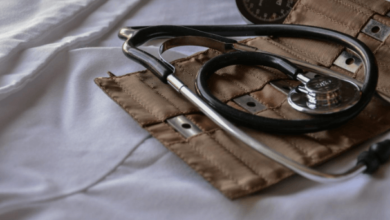How to Treat Wounds? – A Complete Guide

A lot of people get injured and wounded due to several reasons, including outdoor activities, mishaps, accidents, or serious injuries. These may include wounds on parts of the body, cuts, or bruises, but most of them are common parts of life, especially for males, teenagers, and minors, as they are into sports, outdoor and indoor activities, gyms, and doing physical work that may cause wounds.
But most individuals don’t take care of their wounds and injuries and neglect them, which can cause harm to them. When someone gets a wound or injury, it is vital to get proper treatment, including wound care dressings and timely medications, to prevent any kind of major infections, promote the healing process, and minimize scars on the wound area on the body.
Considering all of these medical concerns, here’s a guide on treating wounds and understanding the various types of wounds so that you can have complete knowledge about the wounds and take proactive measures. In case you or a loved one friend gets a wound or injury, so, you make well-informed decisions.
What Are the Common Types of Wounds?
Now you know what the wounds exactly are and how they are caused, let’s explore the types of wounds that happen to people:
- Abrasion
When your skin scarps against a rough or uneven surface, a superficial kind of wound is caused, which is called abrasion.
- Laceration
If you or a loved one friend has cut their skin with a sharp object intentionally or by accident, it is called a laceration, and it is crucial to get wound care dressings to avoid infections from entering the body.
- Puncture wound
Have you ever been injured by a needle or something sharp like a nail? You might have experienced this once in your life. In this situation, if the sharp object penetrates the skin, it is called a puncture wound as it punctures the skin.
- Avulsion
Avulsion is one of the most common wounds that occurs in athletes or gym rats. When someone gets an avulsion, a piece or chunk of tissue is torn away from the bone of the body. In this condition, it is important to get instant treatment; you can also search on Google “nurse near me for injection” and find reputable medical providers to get pain injections.
- Burn
A burn is also a common kind of wound that can happen accidentally to anyone. Usually, a burn occurs when your tissue gets damaged by sunlight, heat, electricity, chemicals, or radiation. There are various degrees of burns, but it is crucial to consult with your healthcare provider to get wound care dressings as soon as possible.
7 Essential Tips for Wound Care
Let’s explore the essential tips that will help you cure your wounds:
- Stop the Bleeding
The first and most important step in wound care is to stop the bleeding from the wound. But how? First of all, pressure should be applied directly to the bleeding wound using a clean bandage or cloth. Then, raise the injured limb above your health so that the blood flow decreases in order to slow the bleeding. After this first aid, seek medical attention immediately if the bleeding doesn’t stop within 15 mins.
- Clean the Wound
If the wound isn’t bleeding too much or the bleeding has stopped, make sure to clean the wound gently with clean water and rinse firmly to remove the dirt from the wound. Remember, don’t use soaps to wash and clean the wound, as soap can cause irritation to the wound. However, you can use unscented, mild soaps in order to clean the wound.
- Inspect for Foreign Objects
Once you have cleaned the wound with water, carefully look for any visible dirt or foreign objects and remove them from the skin. However, doctors recommend not removing objects that are embedded in the wound, such as a metal object or needle or something like a stick; instead, seek medical attention quickly.
- Apply a Dressing
Next up is applying wound care dressings appropriately in order to secure the wound and promote the healing process. You may use a sterile bandage or dressing to cover the wound. However, the dressing is not permanent; it has to be changed daily or twice a day as needed to make sure the wound is clean.
- Monitor for Signs of Infection
Once the dressing is done, it is crucial to look for any kind of symptoms of infection, such as redness, warmth, or swelling. If a person with a wound experiences any of these signs, it means an infection has entered the body. Also, you must check for pus or drainage from the wound, as it is also a sign of a disease. If the signs of infection are prominent, then consult with a doctor.
- Over-the-Counter Pain Relief
You can use pain relievers such as over-the-counter pain relievers like acetaminophen or ibuprofen, which are really beneficial in managing and eliminating the pain that is caused by the wound. Yet, it is recommended that you follow the dosage as prescribed on the product label or consult with your healthcare provider.
- Prevent Infection
If you or your family member or friend has a wound, it is essential to keep the wound clean and dry. Furthermore, make sure to avoid touching the wound with dirty hands as it increases the chances of getting an infection. Additionally, avoid using irritating substances or any kind of harsh chemicals on the wound.
Read also: Health Benefits Of Kratom: What You Should Know
The Final Words
In summary, it is always a good decision to take proper care of your wound, not just to promote prompt healing but also to prevent any sort of complications in the wound. Furthermore, you can follow these tips and understand the various types of wounds as we have discussed above. This can help you effectively treat and manage minor wounds, injuries, and bruises at your home. However, if you face severe bleeding from the wound, persistent pain in the wound area, or signs and symptoms of infections, then you must consult with a medical expert.







